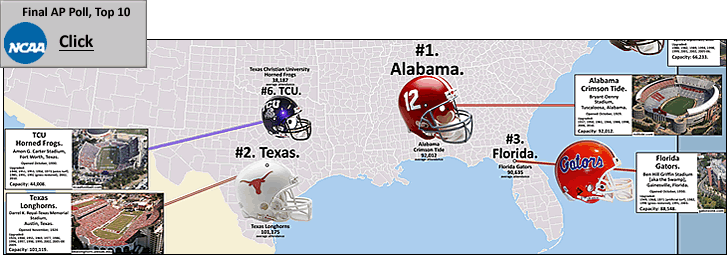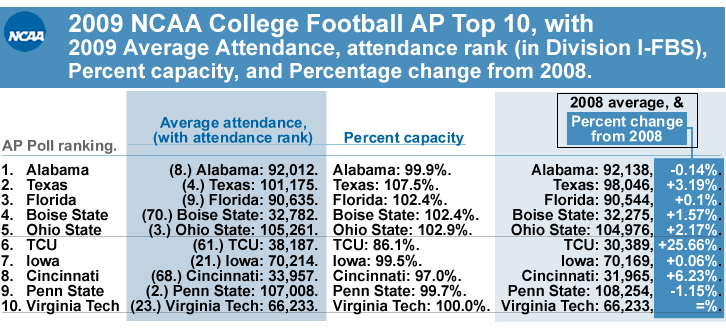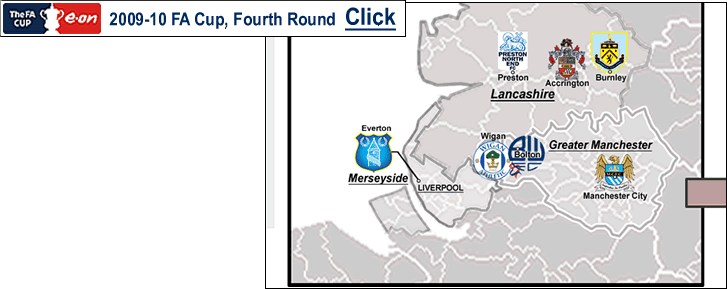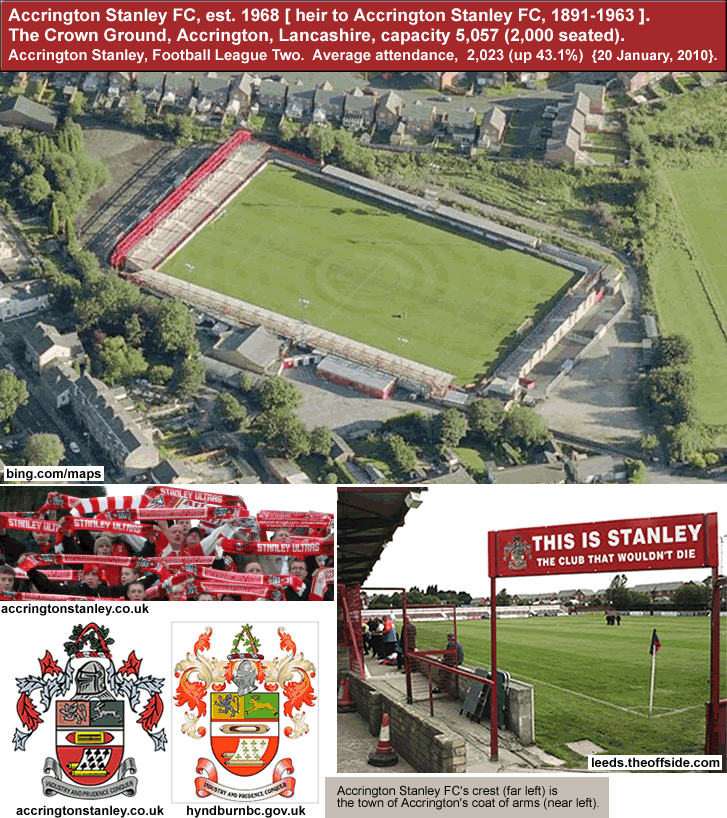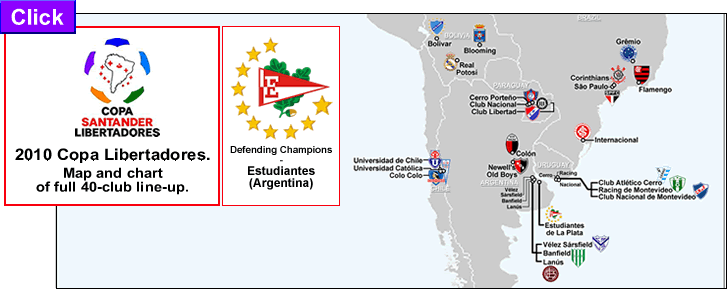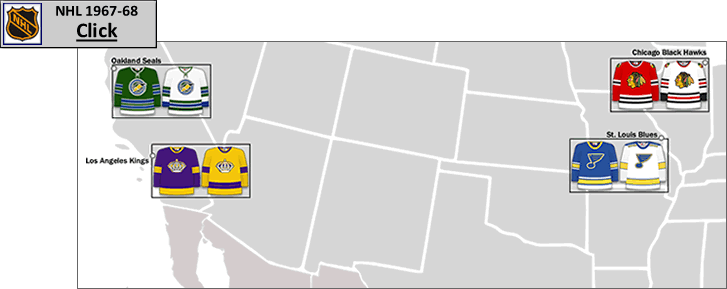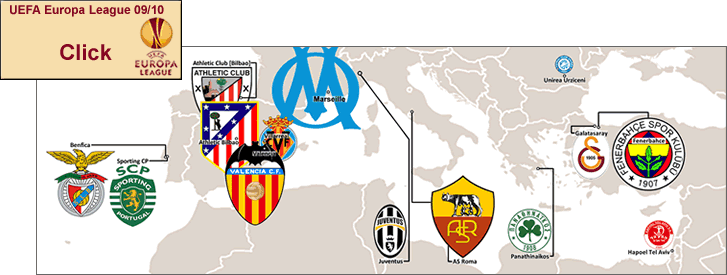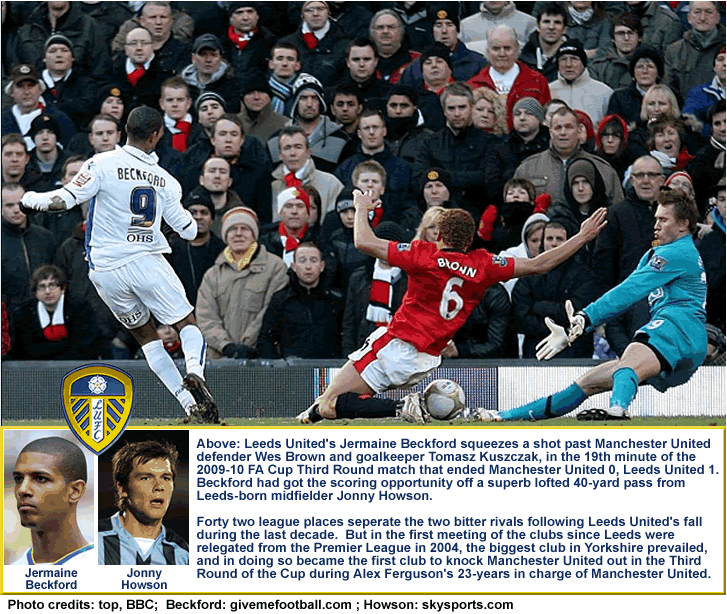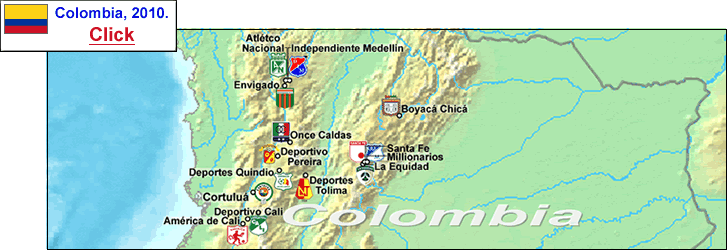
The El Dorado era in Colombian fútbol (1949-1953)…
Football first came to Colombia via British sailors in the Caribbean Sea port city of Barranquilla. Football remained an amateur affair with no national league for decades, and with the game having little presence in the interior of the country. This was primarily because of the lack of transportation infrastructure in a nation which had some formidable barriers, namely steep mountain ranges and wide rivers. Coffee growing as an industry changed that, providing the wealth that allowed for transportation improvements, and by the 1930s and 1940s, football had spread throughout Colombia. The wealth also brought into focus the economic disparity between the privileged few and the teeming masses of the underclass. In 1948, at the same time that a professional league was about to begin play in Colombia, there was widespread civil unrest following the still-unsolved assassination of the presedential candidate Jorge Eliécer Gaitán, who was mayor of Bogatá. Gaitán was a threat to the entrenched oligarchy…his most famous pronouncement was “The people are superior to their leaders”.
With thousands dying in street riots, and the brand-new pro league about to begin, the governing body for amateur football in Colombia asked FIFA to suspend the pro league. FIFA did so, but then a lawyer associated with one Bogatá club, Millonarios, found a loophole which blew the door wide open…this new league and its clubs were no longer bound by rules put in place by FIFA with respect to player transfers.
This would not have been a big deal if player-management relations were normal, but player strikes in Argentina turned this situation into a mass exodus of top-calibre talent into Colombia. With coffee money to burn, and not having to deal with rules, or transfer fees, clubs like Millonarios filled their roster with some of the best players in Argentina, most notably Alfredo di Stéfano (who would later go on to fame in Europe, becoming the player that made Real Madrid the power it is to this day). Other clubs followed suit, and for 5 seasons, 1949 to 1953, Colombia had an essentially pirate league that was producing some of the best football in the world. This era in Colombian fútbol is known as ’El Dorado’.
It wasn’t just Argentine players who flocked to Colombia for the higher wages. Peruvian, Ecuadorian, Uruguayan, Brazilian, Mexican, Chilean players; and even Scottish, English, Irish, French, and Hungarian players came to Colombia during this pirate-league golden age. By 1950, there were over 100 foreign players in Colombia. The situation was playing into the hands of the oligarchy, as they realized that this incredible calibre of football was distracting the still-restive underclass…bread and circus, if you will. FIFA allowed the pirate-league situation to continue until the end of the 1953 season, then professional Colombian football was shorn of its high priced talent, and Colombian fútbol took its place back in the pecking order in South America, a rung below Brazil and Argentina.
-
The Colombian first division is known as Categoria Primera A. This season’s competition, its 62nd, is known as the 2010 Liga Postobón (for sponsorship reason), and begins January 30th and 31st, with a full slate. To see the fixtures, {click here (Soccerway.com)}.
The league has 18 clubs, yet plays 18 rounds for each season in the year, which is divided into the Apertura season (usually early February to May) and the Finalización season (June to December). In each season, clubs play every club in the league once (17 games), plus an extra 18th game against the local rival, which is appointed to them.
The make-up of these extra-match-versus-local-rivals-fixtures does not change that much because sometimes there is just one club relegated to Primera B, and one club promoted. Like in Argentina, relegation is determined by first division results from a three-year period. The club with the worst cumulative average over the three-year-period is relegated, and the second-worst club must play the second place club in Primera B in a relegation/promotion playoff.
Since 2002, the league format has featured a large, 8-team post-season playoffs, and split champions for each year, which are denoted by the Roman numerals I and II for that year’s Apertura and Finalización champions. In other words, the current champion, Independiente Medellin, were winners in 2009-II. Independiente Medellin defeated Atlético Huila 3-2 on aggregate, and on 20th December they were champions.
-
In 1948, the DIMAYOR, or División Mayor del Fútbol Profesional Colombiano (in English: Major Division of Colombian Professional Football) was formed in Barranquilla. Right away, the Colombian professional game went through the aforementioned ’El Dorado’. The league was out of the jurisdiction of FIFA during this 5-year period, and players from all over South America jumped at the opporttunity to play in Colombia for what were then record wages.
The appropriately named Millonarios (established 1946), of Bogatá, who wear blue-and-white, were the club that had the biggest success during El Dorado, winning four of the five titles in the El Dorado era. The team at this time became known as the ballet azul (the ballet in blue). Millonarios, led by that wizard Alfredo di Stéfano, went through the 1951 season undefeated. They would quickly score a few goals, then opt not to score any more goals which would humiliate their opponents, instead putting on a passing display that would dazzle the large crowds. International tours ensued, and Millonarios were victorious over many top European clubs. This also exposed the club’s talent, and as soon as the pirate-league status of the Colombian first division ended, in 1953, all the top players on Millonarios were gone.
Millonarios have never really been as big as during the El Dorado period, although they won 8 more titles, to make 13 titles total. In recent decades, financial problems have plagued Millonarios and the fútbol club has not won a championship since 1988.
[Bogatá is Colombia's largest and capital city, with a metro population of 7.5 million (2009 census, here).]
Millonarios are tied with América de Cali for the most Colombian professional titles, with 13. América de Cali, who wear red-and-white, are a club that can trace its roots back to 1918, when it was formed by some students from Colegio Santa Librada in Cali.
[Cali is in western Colombia approximately 128 km. (80 mi.) from the Pacific Ocean, and is the county's second largest city, with a metro population of around 2.5 million.]
There is one crucial difference berween the 13 titles these two clubs each have won…Millonarios have not won a title in 21 years, their last championship was in 1988. And since 1988, América have won 7 of their 13 titles, their most recent in 2008-II. América de Cali have been runner-up in the Copa Libertadores a frustrating four times, in 1985 (losing to Argentinos Juniors on penalty kicks), in 1986 (losing to Argentina’s River Plate), in 1987 (losing to Uruguay’s Peñarol in the dying moments), and in 1996 (again falling to River Plate). América de Cali have been hampered by their past associations with drug cartels, and were on the Clinton List (ie, their $1 million-plus assets in the USA were frozen). Since then, the club has been a financial mess. Nevertheless, in the last 3 decades (1980-2009), América de Cali have still been the most successful club in Colombia, winning 12 of their 13 titles.
Here are América de Cali’s rivalries {click here (‘América de Cali – Rivalries’, from en.wikipedia.org)}.
Third on the list of all-time champions {here} in Colombia are Atlético Nacional, who have won 10 titles, their most recent in 2007-II. Atlético Nacional are from Medellin, and wear green-and-white.
[Medellin is in west-central Colombia and has a metro population of 2.2 million, making it slightly smaller than Cali {note: some sources say Medellin is the second largest city of Colombia, and some sources say Cali is the second largest.}]
Atlético National are one of just two Colombian clubs to have won the Copa Libertadores, which is of course the most prestigious trophy in South America. Atlético National won their Copa Libertadores title in 1989, defeating Olimpia of Paraguay 2-2 aggregate/5-4 on penalty kicks.
Atlético Nacional share their stadium, the 52,000-seat Estadio Atanasio Girardot, with Independiente Medellin, who are current champion. Independiente Medellin, who wear red-with-blue, have now won 5 titles, three in the last decade. This makes them tied for the 6th most-successful club in Colombia with Junior, of Barranquilla, who won their fifth title in 2004-II. Junior wear red-and-white-vertical-stripes-with-blue-pants.
Another stadium share is between the two biggest clubs in Bogatá, the aforementioned Millionarios and Santa Fe. Santa Fehave 6 titles, but none since 1975. Santa Fe, who wear red-with-white/-Arsenal-style kits, are the 5th most titled club in Colombia.
There was a third example of a stadium share in the league, in Cali, between América de Cali and the fourth-most-successful club in the country, Deportivo Cali. Deportivo Cali wear green-and-white, and have won 8 titles, their most recent in 2005-II. That stadium share has ended with the 2008 opening of the monumental 55,000-capacity Estadio Deportivo Cali …see this video filmed by a constructioin worker and you can see how the barriers between the privileged elite and the underprivileged masses have remained. Notice that the all-mod-cons which modern stadia inevitably feature are not at all evident in the gigantic bowl seating. All the seats in the main area are backless benches. While towering above is a sheer wall of multi-story luxury seating for the rich, {click here (‘Estadio Deportivo Cali’, a Youtube video by Pacocali83, from July, 2007)}. Estadio Deportivo Cali is in Palmira, which is 28 km. (17 miles) north-east of Cali.
To round out the all-time champions list, the 8th most successful club in Colombia are Once Caldas, who wear white-with-black-pants, and are from Manizales, which is the principal city of the major coffee-producing area of Colombia. Corporación Deportiva Once Caldas were formed after the El Dorado era, in 1959, from the merger of two clubs formed in the 1930s. One of the two clubs which formed the merger was Deportes Caldas, which was the only club besides Millonarios to win a title during the El Dorado era….Deportes Caldas won the 1950 title. Once Caldas did not make it to the top flight until 1961, and it took almost 3 decades for them to challenge for a title. Once Caldas first made a Copa Libertadores appearance in 1999. They finished dead last in their group. So it was quite a shock to see this club be crowned champions of South America just 5 years later. Their Copa Libertadores title was won in 2004, with a shock upset of Argentina’s Boca Juniors, by a score of 1-1 aggregate/2-0 in a penalty shoot-out.
There are 6 clubs that have won one Colombian professional title. 4 of these are currently in Primera A. The most recent of these, Boyacá Chicó, won the 2008-I title. This club was founded in Bogatá very recently, in 2002, as Chicó FC, winning top flight promotion in 2003, then moving east to Tunja, which is the capital of the department of Boyacá. Boyacá Chicó is a club that is punching above their weight…they play in a stadium that holds just 8,500.
In general, this is a trend in the Colombian game, with small clubs getting the chance to win titles. There are two reasons for this. First, almost all the big/big city clubs have faced financial turmoil in recent seasons. Second, with 8 of 18 clubs making the post-season, all bets are off, so to speak, and several small clubs have recently won their first title…the aforementioned Boyacá Chicó (2008-I); Cúcuta Deportivo (in 2006-II), the-just relegated Deportivo Pasto (in 2006-I); and Deportes Tólima (in 2003-II). Deportes Quindo is the only other club currently in the top flight which has won a title. Deportes Quindo are from Armenia, a city of around 325,000 which is located in the center of the triangle formed by the three biggest Colombian cities of Bogatá, Cali, and Medellin. Deportes Quindo won their sole title in 1956, 3 years after the El Dorado period ended. The only other club with a Colombian title is the Primera B club Unión Magdalena, from the north coast city of Santa Maria. Unión Magdalena won the 1968 title. Colombia’s most-recognized player, Carlos Valderrama, got his start there.
___
Thanks to the contributors to the pages at en.wikipedia.org {click here}, and es.wikipedsia.org {click here; translated, here}. Thanks to http://knol.google.com/k/colombian-football-league . Thanks to http://www.demis.nl , for the base map.
Thanks to David Goldblatt, for his book ‘The Ball Is Round, a global history of football’, originally published in 2006, by Penguin Books, Ltd., London {at Amazon, here}.
